This piece is part of a series titled “Nonstate armed actors and illicit economies in 2022” from Brookings’s Initiative on Nonstate Armed Actors.
Once enjoying almost unparalleled power, widespread domestic legitimacy, and an aura of untouchability, Iraq’s paramilitary Popular Mobilization Forces (PMF) is on a downward trajectory. The PMF is still resilient and retains considerable formal and informal coercive and economic power. However, in 2022, it will face growing challenges to its legitimacy, structure, and influence. These stem from widespread public resentment at the PMF’s repression, its internal weakening and splintering, and a growing rivalry with the cleric-cum-militia leader-cum-politician, Muqtada al-Sadr. These vulnerabilities could allow the PMF’s opponents, technocrats within the Iraqi state, and their unlikely bedfellows like the Sadrists, to chip away at its power.
The PMF’s sources of strength
Between 2014 — when it was established in response to the Islamic State group (IS)’s offensive across Iraq and the collapse of the Iraqi army — and 2019, the PMF achieved a marked ascension. The umbrella organization, overseeing a patchwork of militia groups with varying ties to the Iraqi state, politicians, and Iran, constitutes a politically effective and formidable force, with combat experience, robust military capabilities, wide-ranging geographic presence, and access to local resources across Iraq as well as multifaceted support from Iran.
The precise number of PMF fighters is unknown; at its peak, the organization claimed to command 160,000. Those numbers included a) fighters from pre-existing, mostly pro-Iran, militias like the Badr Brigade, Kataib Hezbollah, and Asaib Ahl al-Haq; b) so-called shrine militias, i.e., Shia volunteers who responded to Grand Ayatollah Ali al-Sistani’s fatwa to defend Iraq from IS; and c) various Sunni, Yazidi, Christian, and other minority self-defense groups.
The PMF’s heterogeneity and (sometimes coerced) inclusion of Sunni and other ethnic groups allowed its Iran-aligned leadership to portray the force as transcending narrow ideological ties to Iran rather than doing the bidding of a foreign government.
The PMF leadership at various times claimed and rejected the affiliation of Saraya al-Salam, the large and powerful militia loyal to Sadr, which has influence in Basra and other parts of Iraq’s south as well as a strong presence in Baghdad. But the tenuous association between the PMF and Saraya al-Salam, which never included an operational integration of the Sadrists into the PMF, was often confrontational with competition over legal and illegal economic rents and vote banks.
Both the PMF and Saraya al-Salam entrenched themselves in and took over Iraq’s many formal and illegal economies, from the construction contracts that followed the devastation of war; the service sector; and the scrap metal trade to generalized extortion; customs evasion; and oil, drug, and other contraband trafficking. Diverted custom revenues alone generate vast income for PMF militias, while Iraq loses some $10 billion annually.
As with Saraya al-Salam, the PMF’s monopolization of economic markets and job opportunities endows the organization with political capital. Even while local populations resent the PMF’s human rights abuses and sectarian discrimination against the Sunnis, such as in Ninevah province, they often need to act as supplicants to the PMF to obtain jobs and business opportunities and avoid violent retaliation, such as the burning down of their businesses, kidnapping, and assassination.
Crucially, unlike many militias around the world, the PMF managed to acquire a formal status in Iraq’s official security forces as a state-sanctioned auxiliary force with an annual budget of over $2 billion. Its political sponsors and partners in Iraq’s parliament and ministries — including the prime minister’s office when Haidar al-Abadi led the government — further shielded the PMF from accountability or efforts to reduce its power. Thus, the PMF has seen the state not as an entity to topple, but a structure critical to its survival and ascension.
The PMF’s sources of weakness
Since 2018, the PMF’s power and fundamental lack of internal and external accountability led its Iran-aligned factions to violently attack civilian activists. From Baghdad to Basra, the pro-Iranian — and Sadrist — militias killed and kidnapped scores of civil society leaders and ordinary protestors to suppress a movement demanding anti-corruption reforms, better services and governance, more jobs, and an overhaul of Iraq’s dysfunctional post-2003 political order.
The January 2020 U.S. killing of the PMF’s powerful and charismatic leader, Abu Mahdi al-Muhandis, and its Iranian patron, Islamic Revolutionary Guards Corps General Qassem Soleimani, intensified the PMF’s internal fissures and the organization suffered a leadership crisis. Amid the disarray, the shrine militias withdrew from the PMF. The split severely undermined the PMF’s until-then strong religious legitimacy, augmenting reputational vulnerabilities of the pro-Iran leadership and factions as being street thugs and Iranian stooges.
The PMF’s ideological and material ties to Iran and Tehran’s strategic interests in Iraq and the region pose problems for the group. They allow the PMF’s rivals and the Iraqi public to disparage the PMF’s lack of patriotism and commitment to Iraq’s prosperity. Iran’s sponsorship thus both delivers resources to the PMF and hampers its ability to transition to a self-sustaining political actor not saddled with the baggage of being part of Iran’s “axis of resistance.”
The withdrawal of the shrine militias also significantly reduces PMF membership numbers, long inflated with ghost soldier counts, thus diminishing the group’s claim to state budgets. Along with the Sadrists, the shrine militias now constitute another rival that could compete for influence, access to resources, and territorial influence.
In the October 2021 parliamentary elections, the PMF’s Fatah Alliance performed poorly. In a courageous willingness to uphold laws and transparency, Iraq’s election commission excluded PMF fighters from special voting for members of the security forces because the organization did not provide a list of its fighters, which it has refused to disclose for years. Fatah secured 17 seats, down from the 48 it won in 2018. In contrast, the Sadrists, the PMF’s foremost rival, won 73 seats.
Through legal challenges and violent intimidation, the PMF has sought to overturn the results. In a brazen escalation, it likely sponsored or undertook a drone assassination attempt on Prime Minister Mustafa al-Kadhimi. With U.S. urging, Kadhimi has sought and struggled to limit the PMF’s power and curtail attacks by pro-Iran militias against U.S. personnel in Iraq.
After his electoral victory, Sadr called on the PMF to disband. The PMF refused. For years, the PMF has rejected and sabotaged national-level efforts at disarmament, demobilization, and reintegration (DDR) of its fighters, despite calls from Ayatollah Sistani. Reluctantly, it only acceded to minor steps, such as relabeling its offices and moving its arms depots out of cities, though mostly refusing to remove its fighters and bases from urban areas.
Sadr also announced he would disband his Saraya al-Salam militias and closed several offices to burnish his movement’s newfound credentials as a law-abiding entity operating within the parameters of the state. For years, the Sadrist militias operated with a mailed fist in Basra and elsewhere. It remains to be seen whether the moves will translate into actual withdrawal of the militias or the relinquishment of their economic interests.
Finally, in December 2021, the U.S. formally reframed its military mission in Iraq as no longer a combat mission, though 2,500 U.S. forces remain on Iraqi bases. This deal, negotiated between the Biden administration and the Iraqi government in spring 2021, aims to undercut the PMF’s legitimation efforts through anti-American and “anti-occupation” propaganda.
The PMF in 2022
Much is at stake for the PMF. Its ability to extract resources from the state is tied to its political preeminence, and that is tied to Iran’s ability to influence Iraq’s political environment. The PMF’s ability to justify its state subsidies is diminished by its poor electoral performance, declining popular legitimacy, and relatively low-level, if persistent and growing, IS terrorist activity.
But the PMF also has resilience.
The PMF’s street muscle remains large. It is willing to violently attack its rivals and controls or influences an array of economic sectors. In interviews in Iraq in November 2021, we found that after the October elections, pro-Iran PMF militias in Mosul and other parts of Ninevah actually upped their coercion against Sunni and other local populations, acting with greater heavy-handedness in their systematic extortion and political repression. Our interviews similarly showed that the PMF still opposes, sometimes violently, even informal, quiet NGO efforts to provide DDR assistance to individual PMF fighters who seek to leave the group.
Moreover, the PMF can exploit Iraq’s fractious political environment, capitalizing on the country’s many political divisions. It can reaffirm its partnership with former Prime Minister Nouri al-Maliki of the Dawa Party, which won 33 seats. It is unlikely that Iraq’s fractious political class, which still retains many deep connections to the PMF, would unify to marginalize the organization.
That said, this may be the first time in years that Iraqi technocrats, moderate politicians, and civil society actors — long unable to match the coercive capabilities of the PMF — can exploit the PMF’s internal disarray, Sadr’s determination to prevent the PMF from bouncing back, and the widespread antipathy toward the PMF to reduce the organization’s stranglehold over Iraq’s state and society.
The Brookings Institution is committed to quality, independence, and impact.
We are supported by a diverse array of funders. In line with our values and policies, each Brookings publication represents the sole views of its author(s).

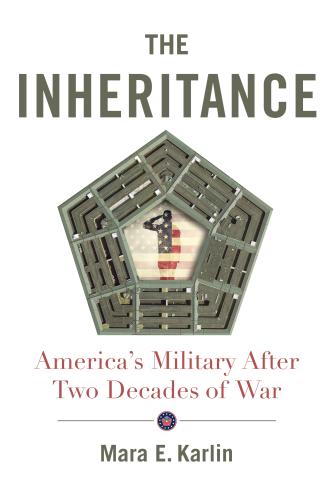

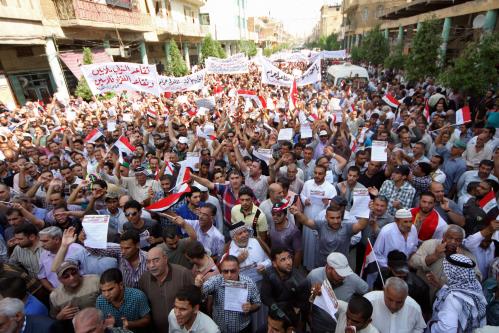
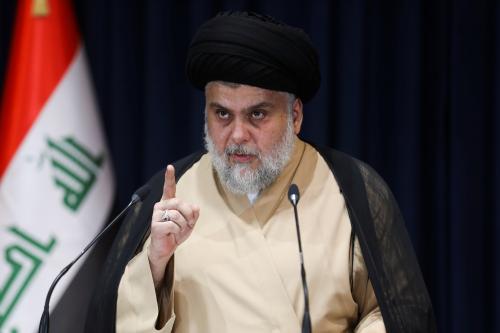
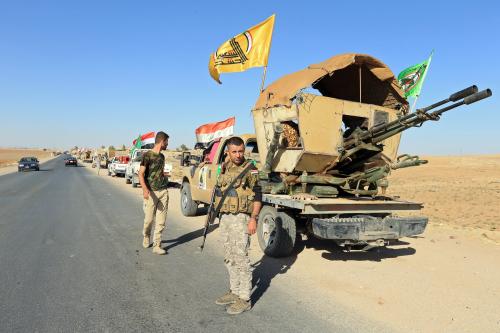


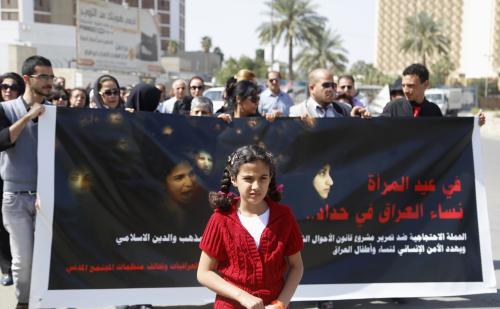
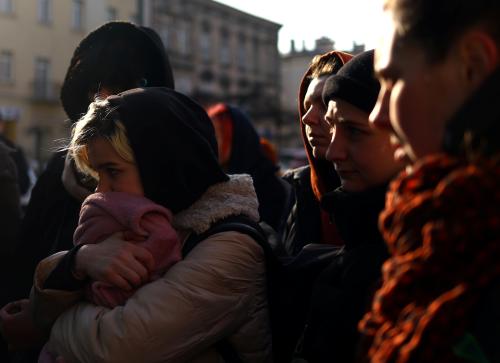
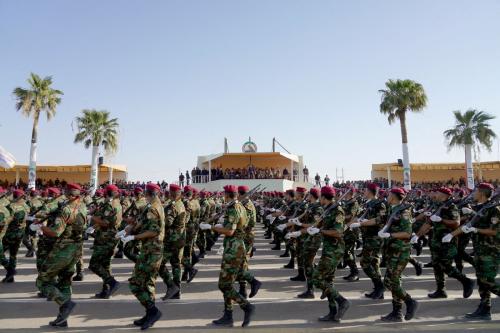
Commentary
New vulnerabilities for Iraq’s resilient Popular Mobilization Forces
February 3, 2022